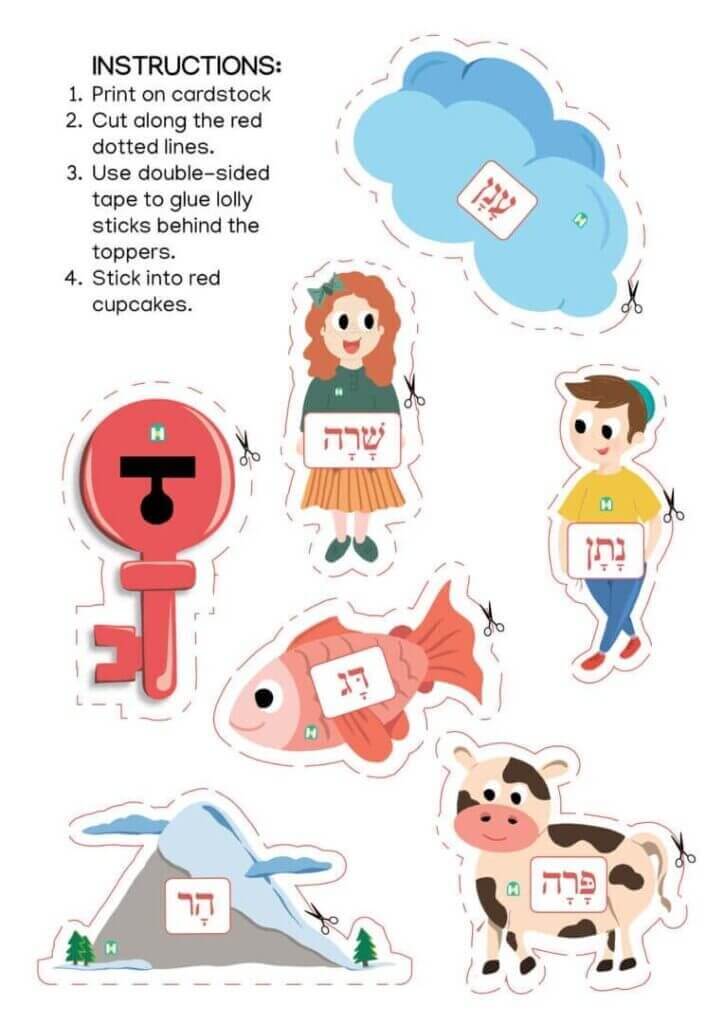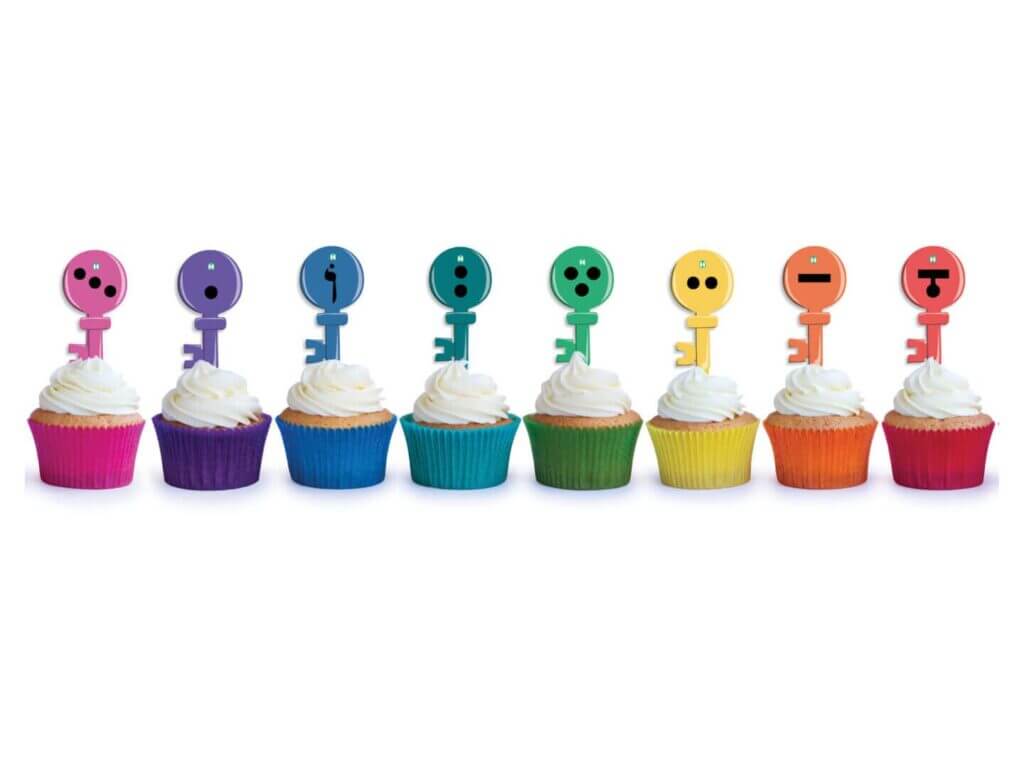The purpose of this orientation is to provide a quick overview of the NikudQuest Unit 1 – Kamatz Materials and Lessons. Becoming familiar with Unit 1 will help you get aquatinted with the remaining units since all the unit lessons and materials follow a similar framework.
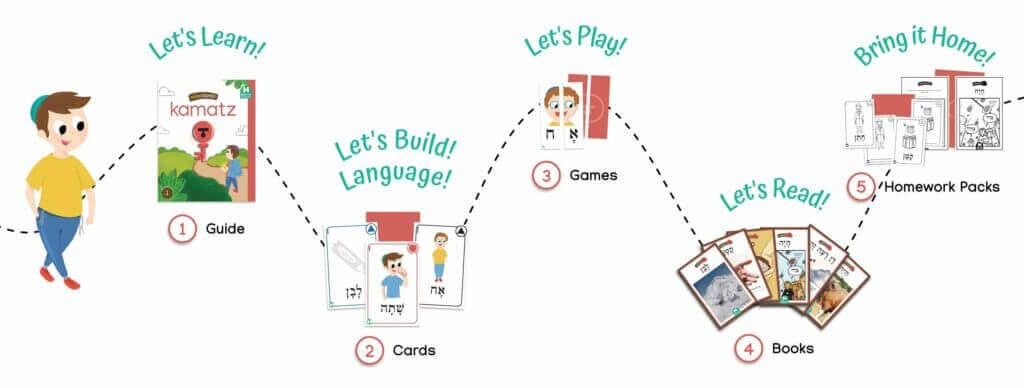
Before starting NikudQuest, use the 4-page Kamatz Readiness Assessment to evaluate each student’s preparedness. This checklist measures:
- Letter knowledge
- Phonemic awareness
- Encoding letters and initial word position
If students meet the criteria, they’re ready to begin the Kamatz unit with confidence. If they’re close but not quite there, you can start Kamatz while addressing the readiness gaps along the way. However, if they don’t meet the criteria, consider Alef-Bet review and/or phonemic awareness training before proceeding.
Table of Contents: Unit 1- Kamatz
Looking at the table of contents of the Unit 1 – Kamatz Student Guidebook, you can get a quick gist of what will be covered in the unit. Part 1 lays the foundation to learning kamatz including phonemic awareness, recognizing the kamatz symbol, speech to text connections and background knowledge.
Part 2 targets reading and writing syllables. Part 3 targets reading and writing words with vocabulary supports. Part 4 and 5 target reading words in relation to other words so children will build reading fluency while they are introduced to Hebrew language structures. More about this soon.

Scope and Sequence: Unit 1- Kamatz
Take a look at what’s inside the Kamatz unit! Our Student Guidebooks, Decodable Books, and Games work together to target key skills in a comprehensive way. Students will build background knowledge, develop syllable awareness, recognize words, and construct phrases and sentences.
With our integrated approach, you’ll see how each component supports a deeper understanding of the Kamatz unit’s learning objectives.
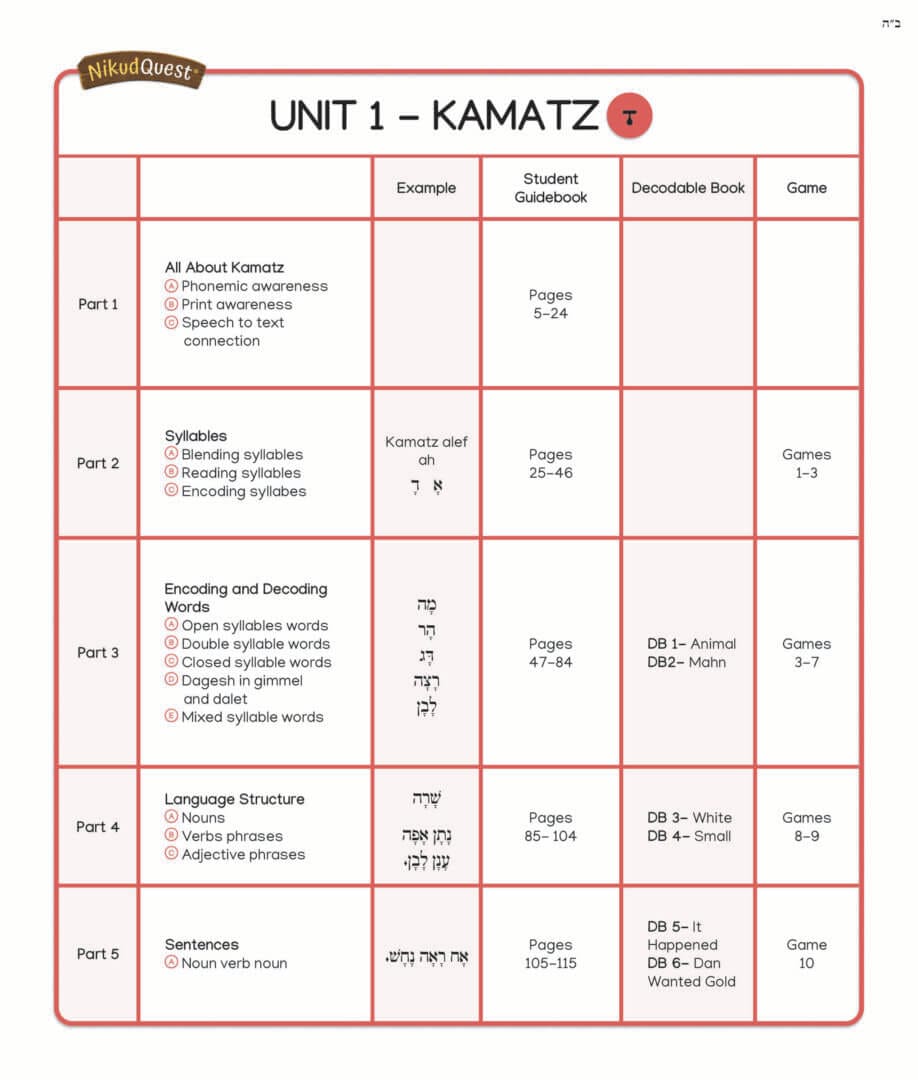
Unit 1- Kamatz Student Guidebooks
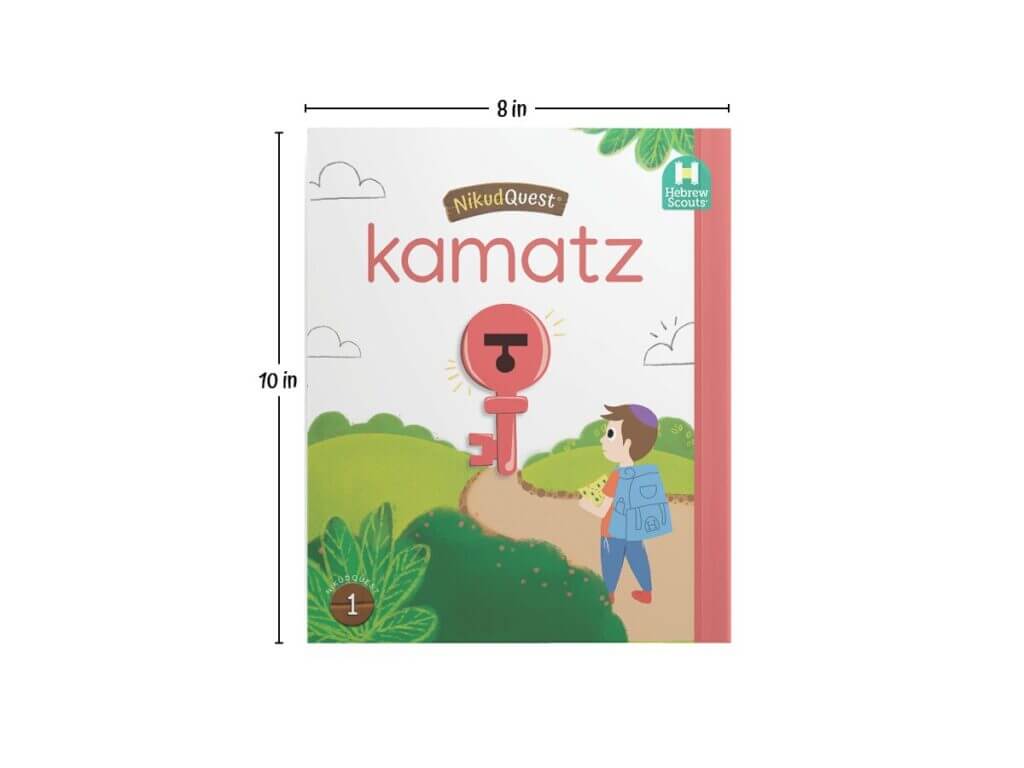
The NikudQuest Guidebooks are a unique, all-in-one workbook that is a teacher’s superpower tool for facilitating perfectly structured Hebrew reading lessons that includes everything you need with minimal prior teaching experience or prep necessary. The students guidebook can double as a teacher guide because they include scripted explicit lessons, guided practice for reading and spelling, assessments and more. The guidebooks inform how to progress through the unit including when and how to play the games, read the decodable books and do the word vault experiences.
Our guidebooks intentionally follow the layout of scaffolded instruction:
I DO: Provides explicit instruction, like a script of sorts for educators to know exactly what to do, teach, and explain in each step and activity.
WE DO: Sections of guided practice activities where teachers should be monitoring and providing feedback.
YOU DO: Sections of independent work where teachers can see how well the students have acquired the skills they were taught, with command icons that clearly show students what to do.
On-The-Go Assessments: Built-in checkpoints with skill tests to evaluate progress and determine if students are ready to move on to the next section.
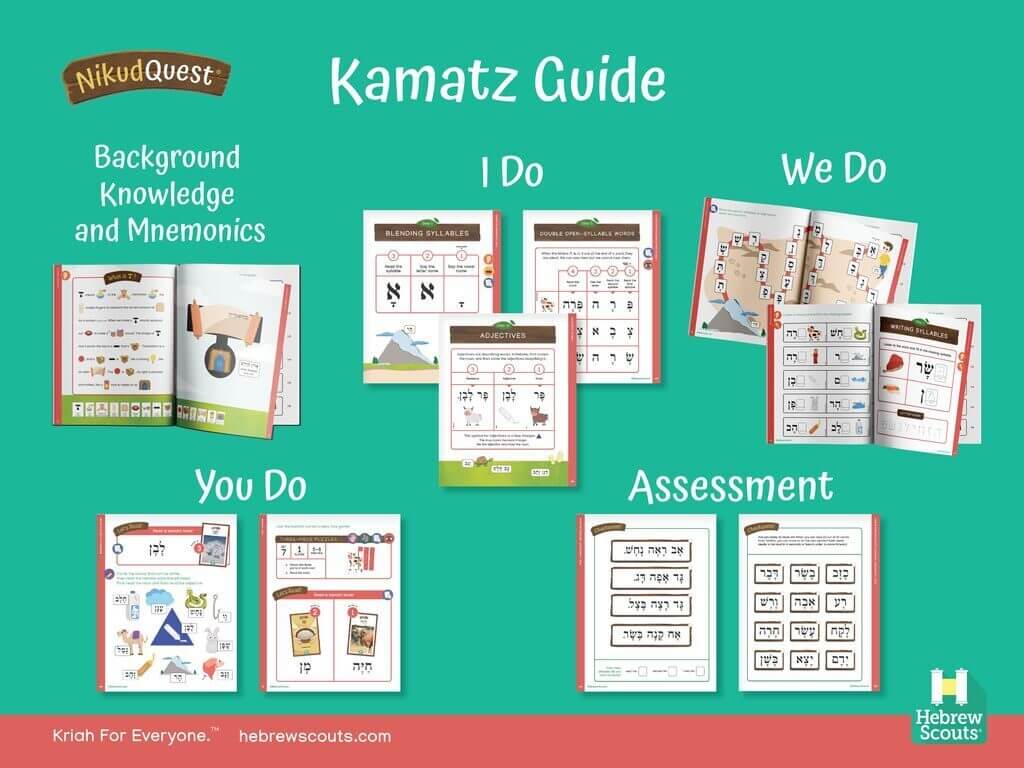
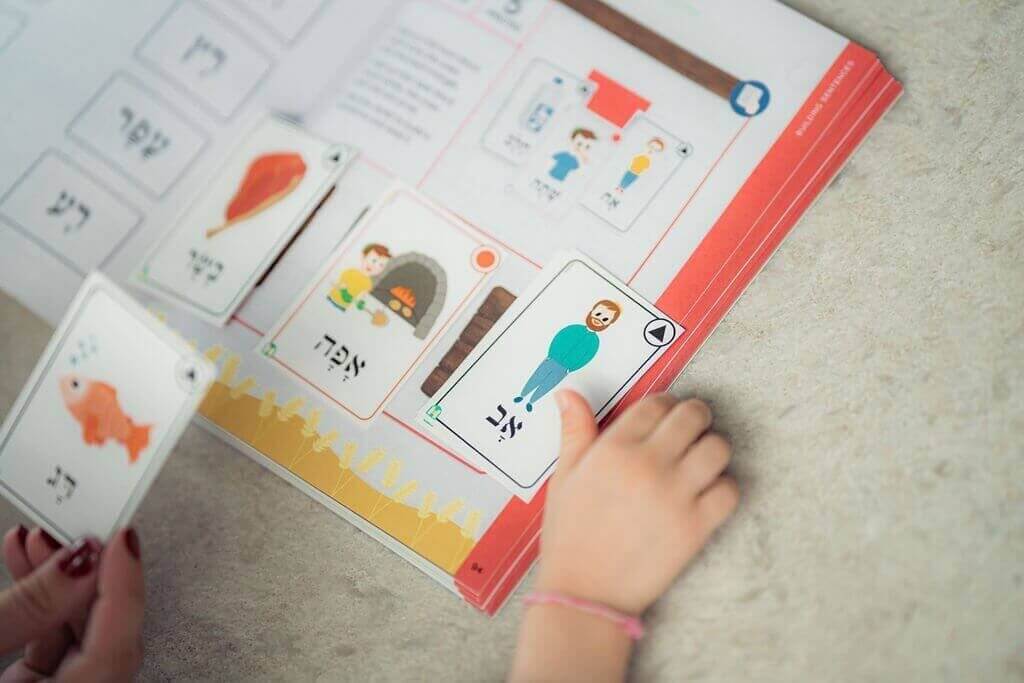
The purpose of the anchor charts is to serve as visual hooks to aid in memory. Anchor charts allow us to move the responsibility from the teacher to the student by giving children a way to access and reference pertinent information. They should be accessible to children so they can refer back to them as they gradually build skills, embed concepts, and gain independence.
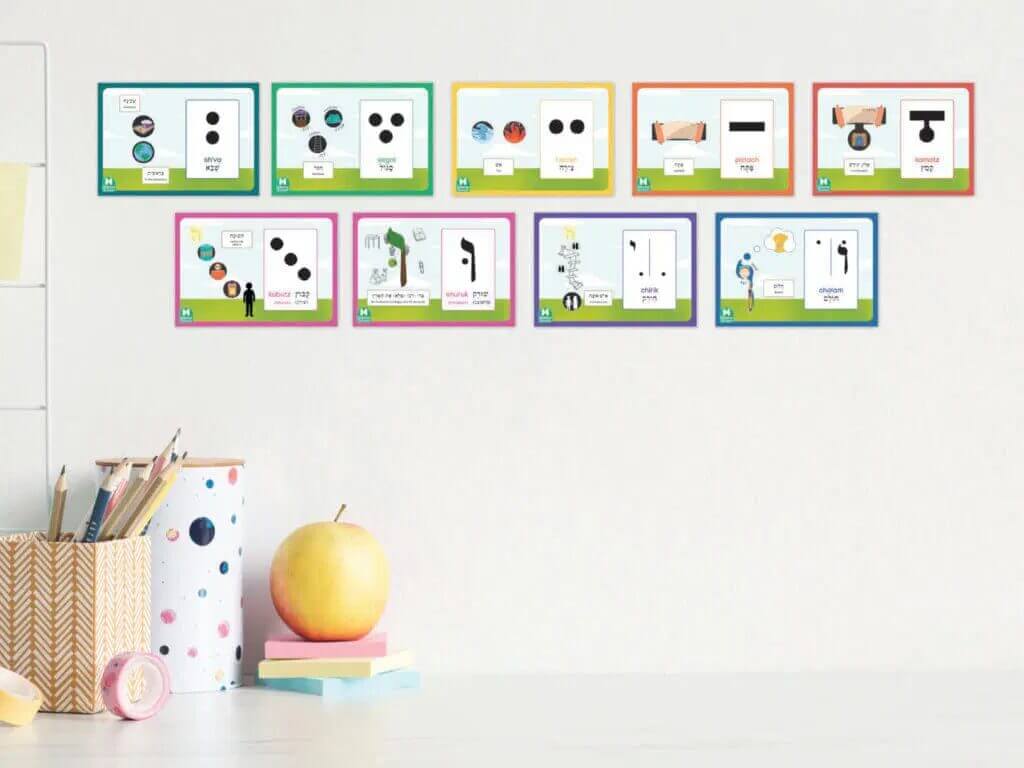
NikudQuest Games: Unit 1- Kamatz
The color-coded NikudQuest games work alongside each unit or lesson step. The Guidebook let’s you know when and how to play a game. To help keep you organized, we’ve marked each set of game cards with the appropriate unit color. Kamatz is red, patach is orange, and so on. We’ve also made each type of set a different size, so you can easily sort them into their proper places even if they get mixed up, and each game packet is marked with a number to suggest the order of use to easily progress in a structured way. Puzzle cards, dominoes, matching games, and clip cards give children much exposure to words and images in various formats. Many of our games are self-correcting, so students can do independent practice with instant feedback they can figure out on their own, reducing teacher workload.

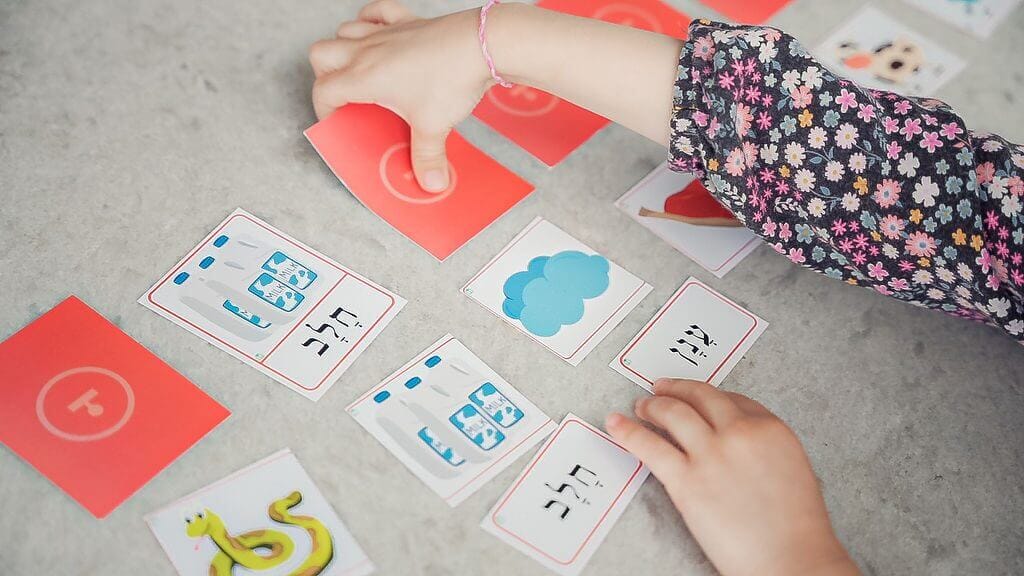
Word Vault Cards and Mats
An important feature included in the curriculum are word vault cards and mats that help children glue together words to form sentences. They are multi-functional and can be used alongside the lessons in all sorts of ways to keep learning exciting. Many of the words vault experiences are included in the guidebook, but there are some additional phrase and sentence structures which will be found exclusively on the word vault mats. The cards are included in the game packs.
The word vault mats are an amazing scaffolding tool that allows children to use grammar symbols and picture supports to compose, decode, and comprehend Hebrew phrases and sentences.
Unit 1 – Kamatz Decodable Books
What are decodable books?
Written language is really a code for oral language. When we “decode” written language, we are simply turning it back into oral language inside of our heads, hence the term “decodable books.”
Decodable Books as a Tool
In the early stages of learning to read, it’s really important for our students to cultivate their ‘reading reflex’. This means developing the instinctive habit of using individual syllable- sound relationships (what we call “decoding”) as the very first strategy when encountering an unfamiliar word. Rather than attempting to guess unknown words, choosing texts wisely that specifically push students to sound out the syllables helps to set this reflex, which in turn leads to more successful independent reading. Mesmer (2005) found that children were more likely to apply their phonics knowledge, read more accurately, and need less assistance when reading decodable books.
So what exactly are ‘decodable books’? These specialized readers are designed to activate and motivate students by striking the delicate balance between necessary simplicity and stimulating engagement.
Our decodable books are carefully crafted to progress ever-so-gradually based on knowledge and skill level, closely following the reading and language structures the children have already learned in the various vowel units. As they go along and decode more words, they’ll be supported to understand their meaning with the aid of context and pictures, and learn new words that are beneficial to support further reading. From fables and narratives to the informational, historical, and humorous, our decodable books span over all types of genres and topics to appeal to children of all interests. We also focus on including words and terminology which will be useful later in Chumash and Tefillah, reinforcing the strong link between education and Jewish heritage.
While we want the language demand to be as low as possible to start, we also want to keep the content interesting and engaging. Once in a while, we need to use a word that includes a decoding element that wasn’t taught yet, to add meaning or to make sure an engaging story or necessary sentence can work grammatically. You’ll see these words or Nikudot printed in gray to reassure students that it is not something they’re required to know on their own at this time and it is okay to receive support and assistance with it.
How to Prepare For The Decodable Books
How do we prepare children for the decodable books? Children should approach a new book with at least 90% accuracy with decoding, and should know about 80% of the vocabulary words in the book. The activities in the guidebooks and games prepare the children for the decodable books, and will tell you when to offer each book at different stages throughout the unit. In this way we can ensure that children have the instruction and practice to come equipped to read the books. Students don’t need to memorize the words or be tested on them, they will reencounter these words again and again. Our job is to expose the children to the language until it sticks. The more exposure they have to the words, with added meaning and engagement, the sooner it will stick and be processed.
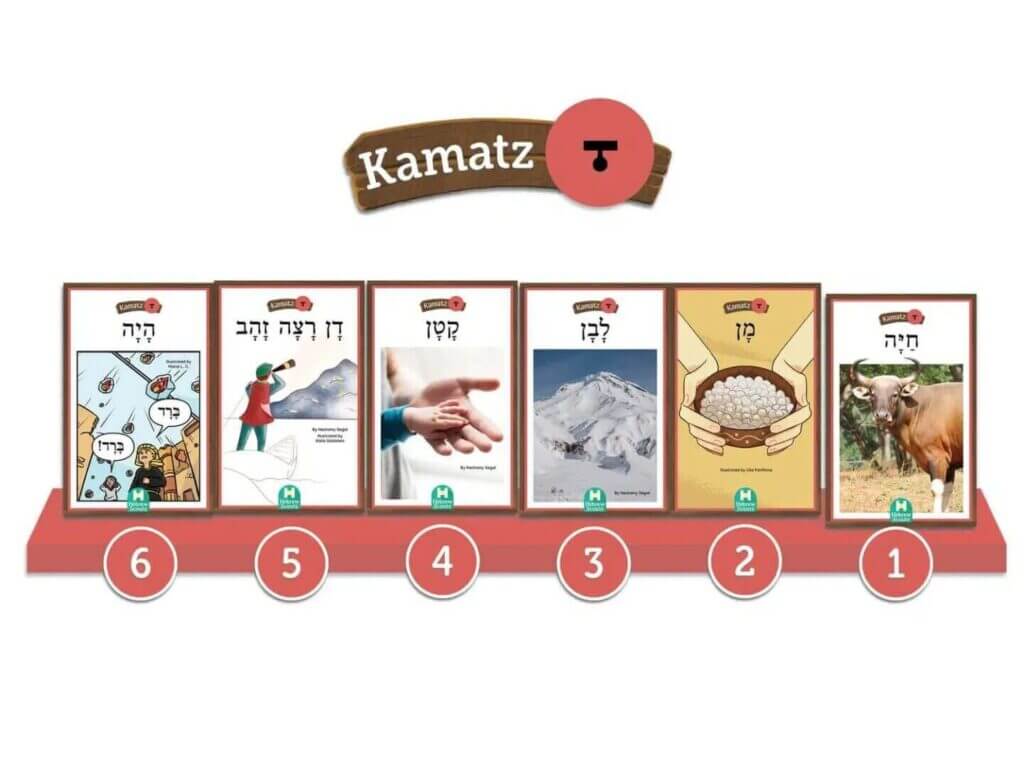
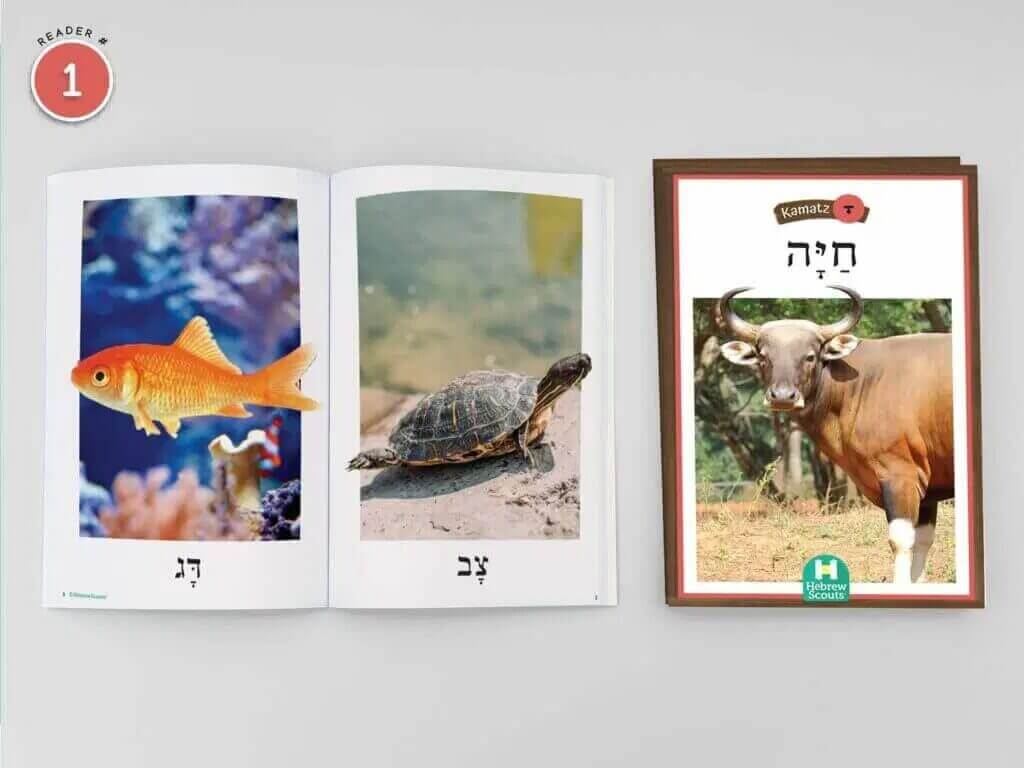
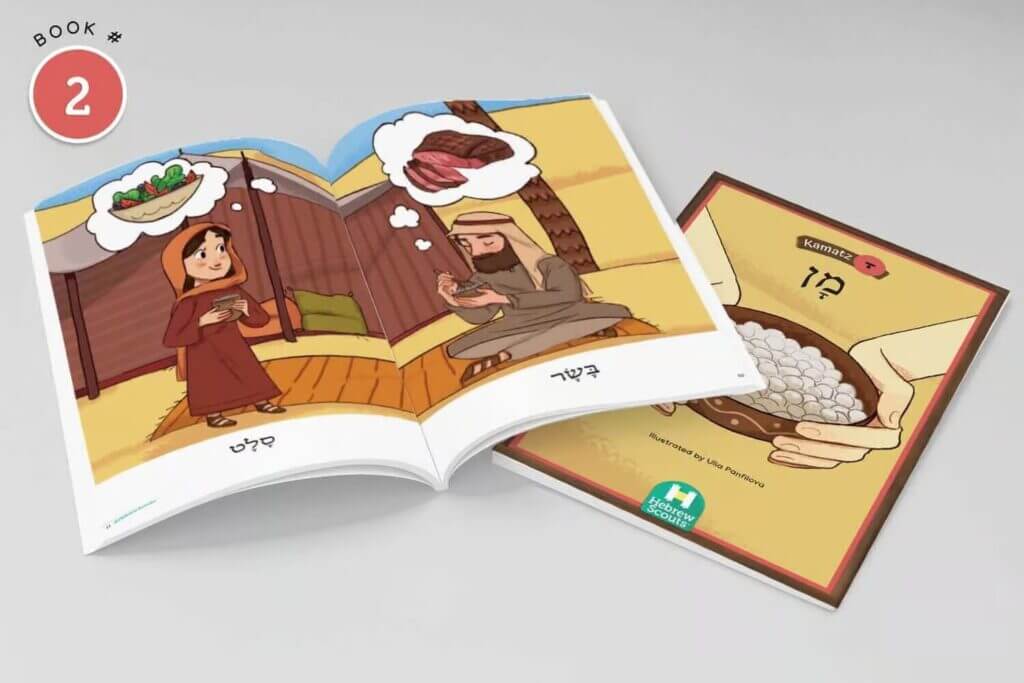
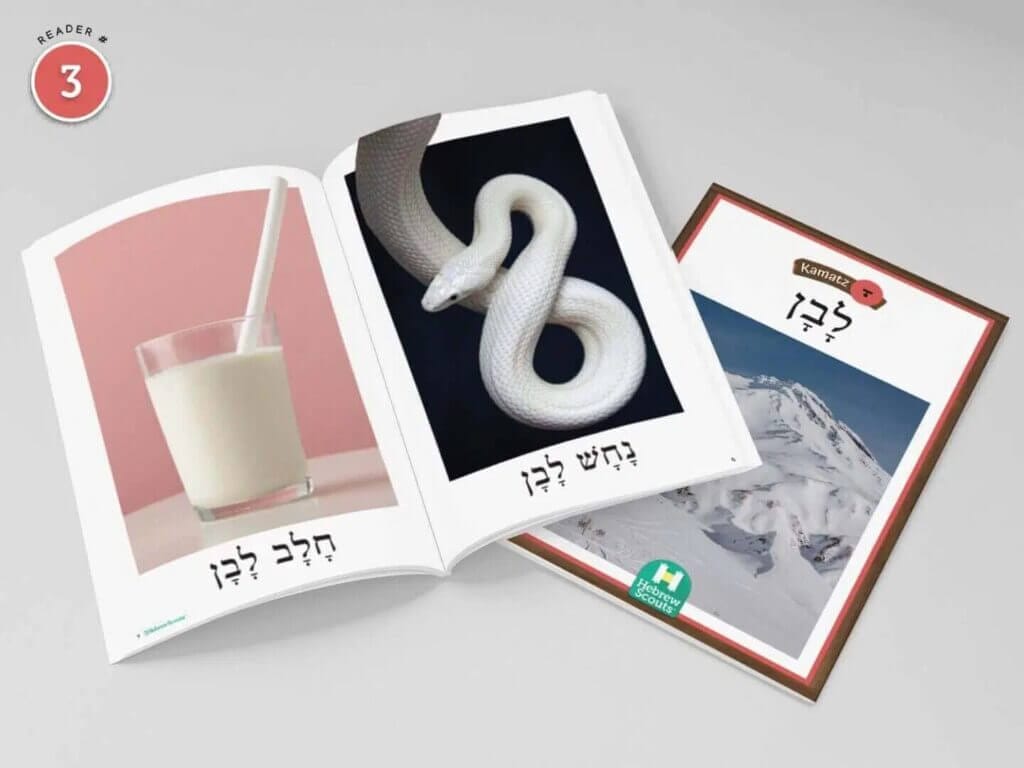

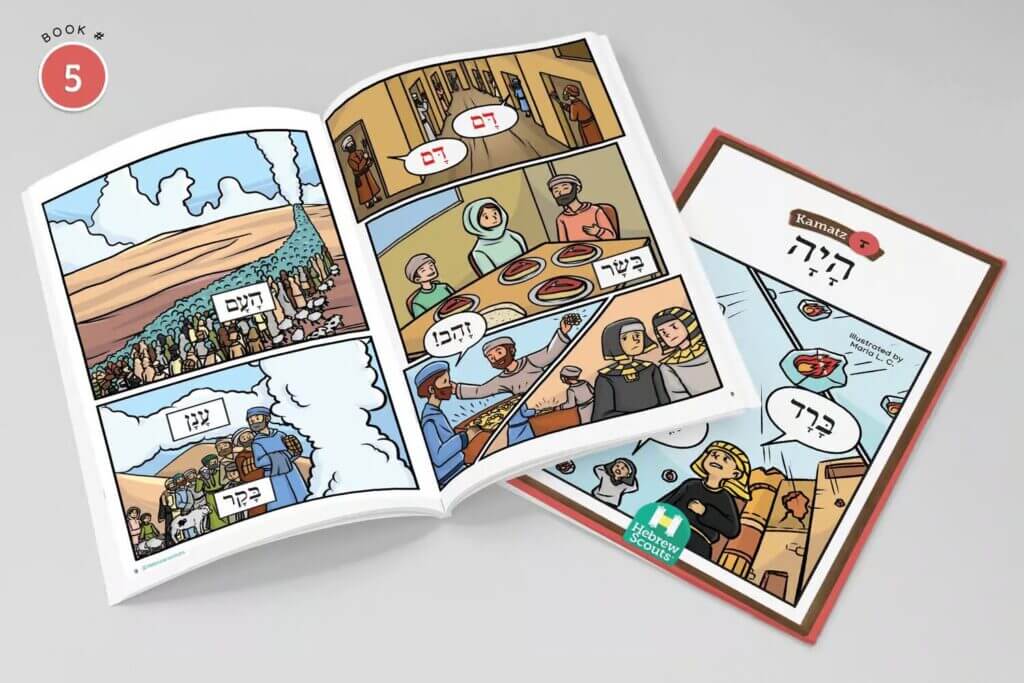
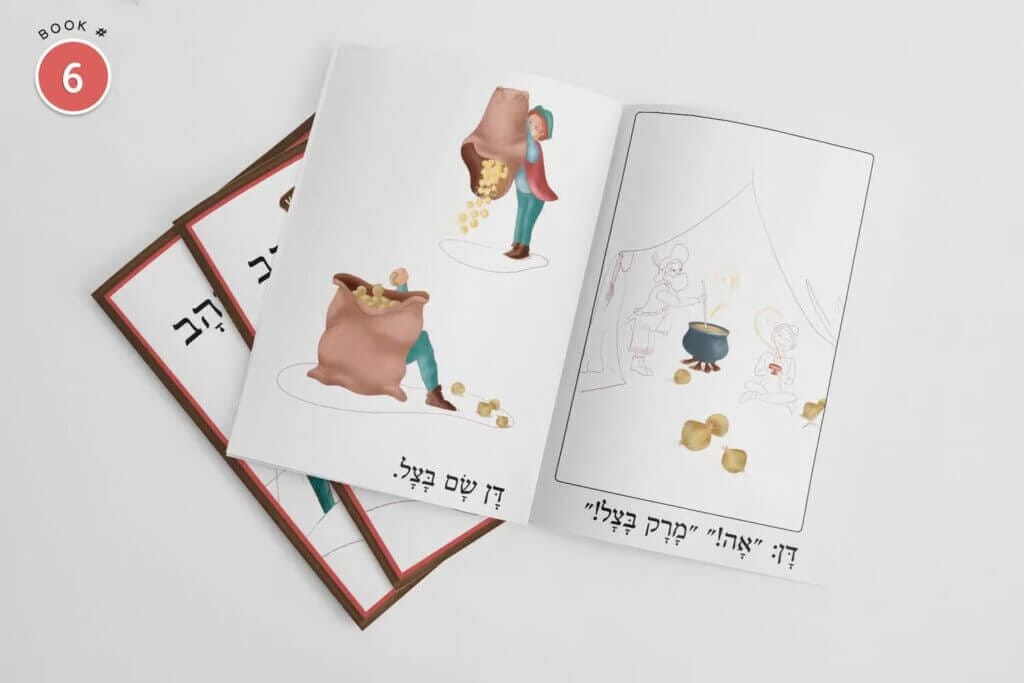
NikudQuest Unit 1- Kamatz Extension Pack
The blackline Extension Packs correspond to lessons in the guidebook, and are made to help students extend their learning or provide extra practice. Children can have their own personal materials for writing, coloring and taking home, and provide additional experiences based on the unit for extra practice, i.e. homework. We included new variations of games and stories for children to have more novel practice at home so they don’t get bored or feel stuck. We want children to take ownership of their work, invest and connect to it emotionally and practically.
You’ll see that they can be used and combined in all kinds of ways to expand concepts and skills.

Unit 2 – Patach Readiness Assessment
The Unit 2- Patach Readiness Assessment can double as a post Kamatz test to ensure children are ready for the next unit.
Here is a downloadable PDF of the Kamatz Certificate. Awarding certificates of completion to children is a powerful way to celebrate their achievements and foster a sense of pride and accomplishment. By recognizing their hard work and progress, we not only boost their self-confidence but also encourage them to continue striving for excellence. These certificates become tangible reminders of their capabilities, motivating them to take on new challenges and reach even higher. As they collect these tokens of success, they’ll develop a growth mindset, understanding that effort and perseverance lead to achievement. Let’s cherish these moments and make certification a special part of their learning journey!

Celebrating accomplishments with colorful treats makes the occasion more enjoyable and memorable, providing a tangible reward that reinforces positive associations with hard work and success. It’s a fun way to show love, care, and appreciation for their efforts, encouraging them to continue striving for excellence!
